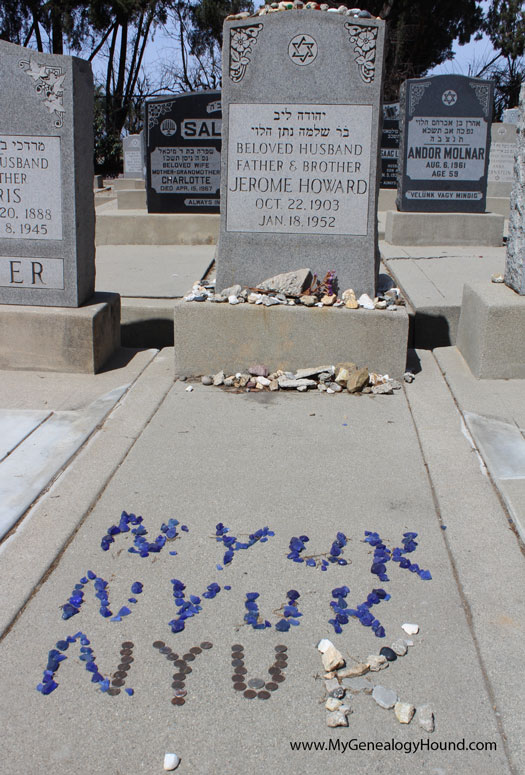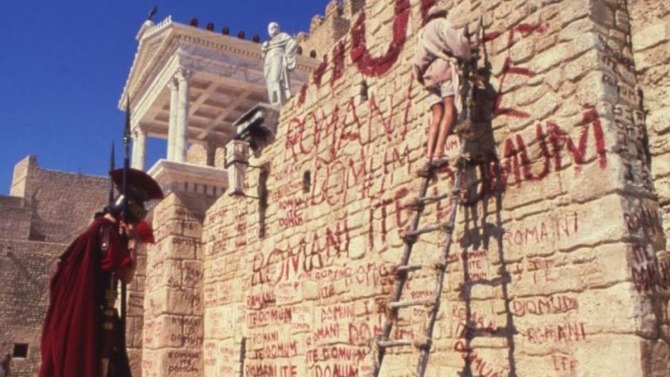Skip to comments.
Archaeological Views: Jewish Graffiti -- Glimpsing the Forgotten Lives of Antiquity
Biblical Archaeology Review ^
| April 01, 2019
| Karen B. Stern
Posted on 03/28/2020 8:04:49 AM PDT by SunkenCiv
Throughout the ancient world, many people, including Jews, carved and painted words and pictures (we might call them graffiti today) in places that would shock modern sensibilities -- inside and around holy spaces and shrines, pagan sanctuaries, synagogues, and churches; and throughout cemeteries, necropoleis, and tombs in regions of modern Israel, Syria, Greece, Italy, Malta, Sardinia, Tunisia, and Libya. The ancients also made their marks in other locations: upon cliffs and open-air sanctuaries along desert roads and trade routes of Egypt, the Sinai Peninsula, and Saudi Arabia; and around public theaters and hippodromes (horse racecourses) along the Syrian coast (modern Lebanon) and Asia Minor (the Asian portion of modern Turkey).
Jews and their neighbors did not write these markings to deface, destroy, or vandalize, as modern analogies might suggest. Quite the opposite -- the purpose was to express piety, reverence, devotion, commemoration, love, and pride. Unlike in modern societies, acts of graffiti writing were often licit, desirable, and even encouraged.
Most people aren't familiar with these graffiti, and many scholars and specialists still dismiss them as random and incidental scribbles. Yet examination of Judahite and Jewish graffiti, of which hundreds survive from the seventh century B.C.E. through the seventh century C.E., singlehandedly promises to transform the study of the Jewish past. As I suggest in my recent book, they offer unexpected insights into the daily lives and activities of the nonelite Jews who wrote them...
So what exactly are we talking about when we say "graffiti"? What do they look like? Some include written signatures and messages -- in Greek, Aramaic, Latin, Hebrew, or Arabic scripts and languages. Others consist of abstract letters or signs. Still others depict images, such as skeletons, obelisks, quadrupeds, birds, ships, menorahs, and riders astride horses.
(Excerpt) Read more at biblicalarchaeology.org ...
TOPICS: History; Science; Travel
KEYWORDS: epigraphyandlanguage; godsgravesglyphs; graffiti; israel
The mortuary context of this menorah (cut onto a doorjamb of Catacomb 12 in Beit Shearim) suggests that graffiti were meant to somehow assist the deceased or sanctify the space. This and similar graffiti also show that -- despite rabbinic disapproval of spending excessive time in impure places -- some Jews spent protracted periods of time in cemeteries and burial caves, engaging spatially and corporeally with the dead and their resting places. Photo: Ezra Gabbay.

1
posted on
03/28/2020 8:04:49 AM PDT
by
SunkenCiv
To: StayAt HomeMother; Ernest_at_the_Beach; 1ofmanyfree; 21twelve; 24Karet; 2ndDivisionVet; 31R1O; ...
In before the first stooge, and all subsequent stooges, complains about the nomenclature used by a Jewish writer to refer to ancient Jewish activities.

2
posted on
03/28/2020 8:05:25 AM PDT
by
SunkenCiv
(Imagine an imaginary menagerie manager imagining managing an imaginary menagerie.)
Whoops.
The mortuary context of this menorah (cut onto a doorjamb of Catacomb 12 in Beit Shearim) suggests that graffiti were meant to somehow assist the deceased or sanctify the space. This and similar graffiti also show that -- despite rabbinic disapproval of spending excessive time in impure places -- some Jews spent protracted periods of time in cemeteries and burial caves, engaging spatially and corporeally with the dead and their resting places. Photo: Ezra Gabbay.

3
posted on
03/28/2020 8:06:08 AM PDT
by
SunkenCiv
(Imagine an imaginary menagerie manager imagining managing an imaginary menagerie.)
To: SunkenCiv
Romani ite domum
- monty python
4
posted on
03/28/2020 8:17:18 AM PDT
by
KOZ.
To: SunkenCiv
Jewish Graffiti
One of Lucasfilms few box office losers.
I still remember the ads:
"Where were you in 5722?"
5
posted on
03/28/2020 8:21:34 AM PDT
by
x
To: SunkenCiv
היה פעם גבר מננטאקט
6
posted on
03/28/2020 8:25:53 AM PDT
by
PghBaldy
(12/14 - 930am -rampage begins... 12/15 - 1030am - Obama's advance team scouts photo-op locations.)
To: PghBaldy
There are graffiti in the Sinai mines, in Hebrew, left by slaves there under Pharaoh. (You can see them by googling “sinai inscriptions”, and then selecting “images” from the top menu bar.
And yes, one of them reads (paraphrased), “We’re still slaves, but Moses has startled Egypt...”
(Or see the book, “The World’s Oldest Alphabet”, by Petrovich, for more on the same.)
To: x
8
posted on
03/28/2020 8:46:35 AM PDT
by
SunkenCiv
(Imagine an imaginary menagerie manager imagining managing an imaginary menagerie.)
To: SunkenCiv
Graffiti is important in identifying sites and cultures. It’s how archeologists know that Roman soldiers typically spoke Latin and also used as further evidence that the Church of the Holy Sepulcher is where the tomb of Christ was.
9
posted on
03/28/2020 8:59:30 AM PDT
by
Varda
To: SunkenCiv
I seems most prefer Curly but I was always a Shemp fan. That was for his acting though. I dont believe Ive ever seen his spray can expressions.
10
posted on
03/28/2020 10:58:16 AM PDT
by
gnarledmaw
(Hive minded liberals worship leaders, sovereign conservatives elect servants.)
To: gnarledmaw
11
posted on
03/28/2020 11:38:00 AM PDT
by
SunkenCiv
(Imagine an imaginary menagerie manager imagining managing an imaginary menagerie.)
To: SunkenCiv
To: x
I see what you did there.....................
13
posted on
03/30/2020 6:31:12 AM PDT
by
Red Badger
(If people were to God like dogs are to people, the world would be a really great place..............)
To: dennisw; Cachelot; Nix 2; veronica; Catspaw; knighthawk; Alouette; Optimist; weikel; Lent; GregB; ..
Middle East and terrorism, occasional political and Jewish issues Ping List. High Volume
If you’d like to be on or off, please FR mail me.
..................
14
posted on
04/02/2020 7:21:03 AM PDT
by
SJackson
(blow in a dogÂ’s face, he gets mad at you, car ride; he sticks his head out the window)
Note: this topic is from . Just a photo URL update that is mostly for me. :^)
The mortuary context of this menorah (cut onto a doorjamb of Catacomb 12 in Beit Shearim) suggests that graffiti were meant to somehow assist the deceased or sanctify the space. This and similar graffiti also show that -- despite rabbinic disapproval of spending excessive time in impure places -- some Jews spent protracted periods of time in cemeteries and burial caves, engaging spatially and corporeally with the dead and their resting places. Photo: Ezra Gabbay.

15
posted on
07/13/2020 5:55:52 PM PDT
by
SunkenCiv
(Imagine an imaginary menagerie manager imagining managing an imaginary menagerie.)
Disclaimer:
Opinions posted on Free Republic are those of the individual
posters and do not necessarily represent the opinion of Free Republic or its
management. All materials posted herein are protected by copyright law and the
exemption for fair use of copyrighted works.
FreeRepublic.com is powered by software copyright 2000-2008 John Robinson




